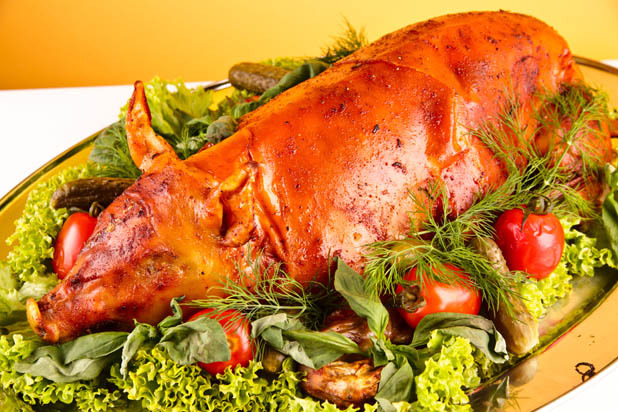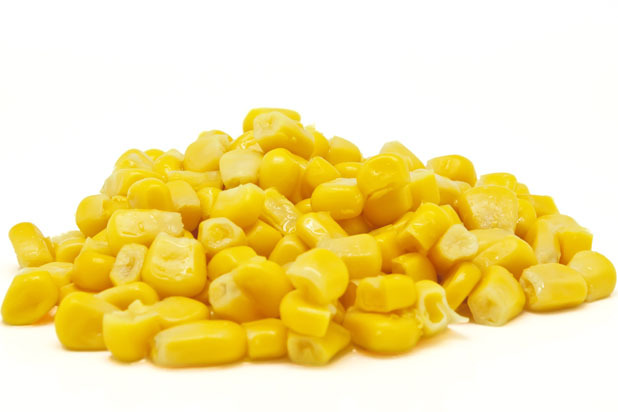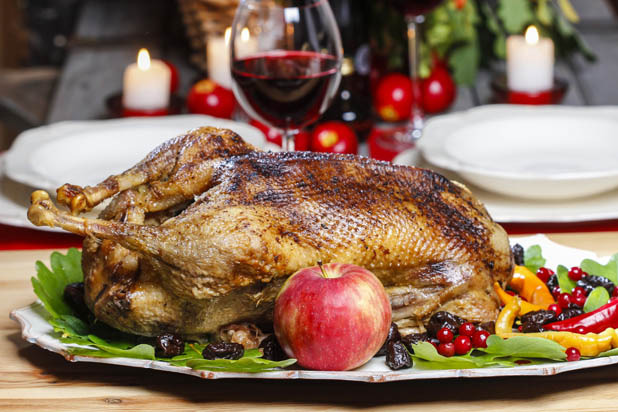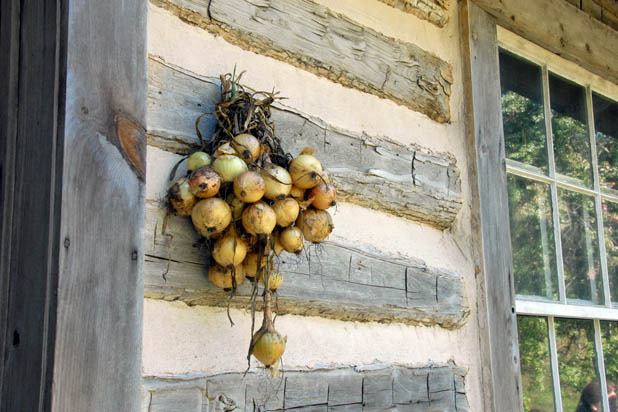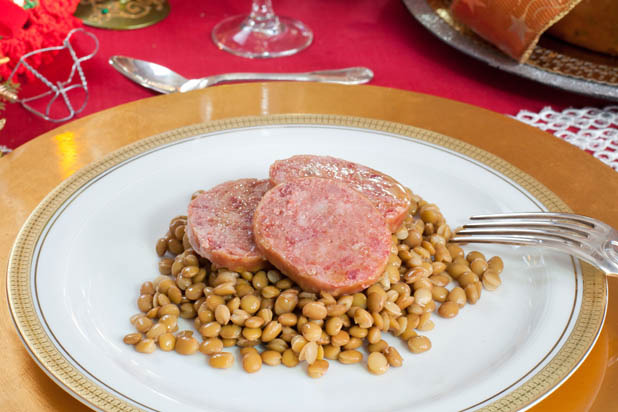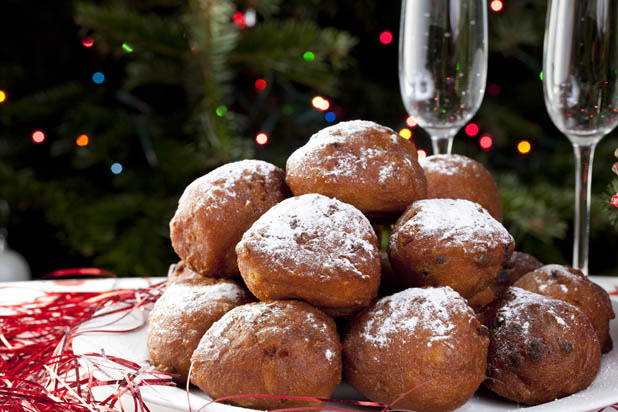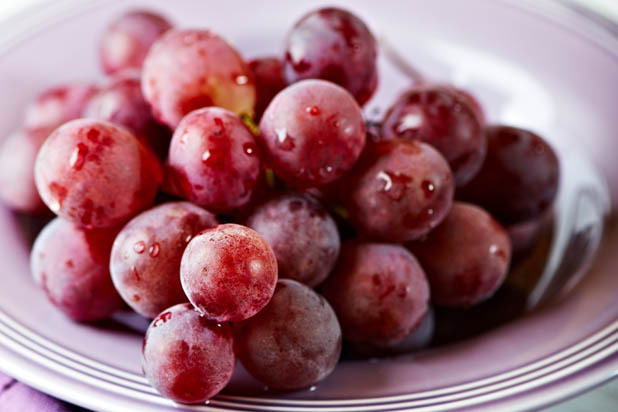20 New Year's Food And Drink Traditions Around The World (Slideshow)
On New Year's Day, Argentineans eat beans, following the belief that eating beans will help them keep their current job or find a better job in the new year.
Austria
For good luck, Austrians serve roasted suckling pig on New Year's Eve — which they call Sylvesterabend — and also decorate their dinner tables with little marzipan pigs. Pigs represent progress and prosperity in Austria as well as in other cultures, including Cuba, Hungary, and Portugal, where they also serve pigs on New Year's Eve. To drink, Austrians sip on a red wine punch, mixed with cinnamon, sugar, and other spices, and give a toast to Saint Sylvester.
Belarus
Unmarried women like to play games on New Year's Eve in Belarus to predict who will marry in the new year. In one game, a pile of corn is set before each woman, then a rooster is let go. Whichever pile of corn the rooster feasts on first determines who will be married first. In another game, a married woman hides different items, one being bread and one being a ring, around her house, and her unmarried friends try to find them. Whoever finds the bread is said to marry a rich husband, and whoever finds the ring will marry a handsome one.
Denmark and Norway
People in Denmark and Norway celebrate the new year with a dessert called kransekage, meaning "wreath cake." It is a tall, cone-shaped cake with many rings layered on top of one another. The cake is made with marzipan and is often decorated with ornaments of flags and firecrackers and a bottle of wine or Aquavit in the center. Another tradition, throwing dishes on a neighbor's doorstep on New Year's Day, is believed to guarantee many friends in the new year.
Estonia
Some Estonians eat seven, nine, or 12 meals on New Year's Eve, believing that with each meal eaten, they will gain the strength of that many men in the new year. Part of each meal, however, is left unfinished for the spirits of ancestors who visit the house on New Year's Eve.
France
Germany
Once the clock strikes midnight and fireworks have been set off on New Year's, Germans enjoy a traditional treat of jam-filled, and sometimes, liquor-filled, donuts called "Pfannkuchens" in Berlin and "Berliners" everywhere else in Germany. Sometimes, a donut may contain a practical joke, such as mustard instead of jam, which is considered by some to be bad luck. Like Austrians, Germans also dine on marzipan pigs for good luck on New Year's Eve — which they call Sylvesterabend, meaning the eve of Saint Sylvester. A traditional drink consumed on New Year's Eve is "feuerzangenbowle." To make the drink, warm mulled wine is mixed with cinnamon, cloves, and orange peel. A large, cone-shaped piece of sugar is soaked in rum, placed in a holder above the wine, and set on fire. Then, the sugar caramelizes and melts into the mulled wine. However, toasts at midnight are not given with this traditional drink, but instead with champagne.
Greece
Symbolizing birth and re-growth in the new year, in Greece an onion is hung on the front door on New Year's Day alongside a pomegranate (which is hung on Christmas). Later in the evening, a meal of roast lamb or pork is eaten, and an extra place is set at the table for Aghios Vassilis, or Santa Claus.
Italy
On New Year's Day, Italians feast on the traditional dish of cotechino e lenticchie, which is savory pork sausage containing "lo zampone," or the hoof of the pig, and paired with lentils. The hoof is considered to be a symbol of abundance and lentils are believed to bring good luck and prosperity in the new year.
Japan
Just before the clock strikes midnight, people in Japan begin the new year with a bowl of buckwheat noodles called toshikoshi soba, which are known as "year-crossing noodles." Other traditional foods eaten on New Year's include kuromame (sweet black beans), kazunoko (herring roe), kobumaki (rolled kelp), rice cakes, and shrimp.
Mexico
With each chime at midnight, Mexicans eat a grape, representing a wish. A Mexican sweet bread called Rosca de Reyes, which is baked with a coin or charm for good luck, is also eaten. And whoever gets the slice with the coin or charm is believed to have good luck for the year. Salted codfish, warm tequila punch known as ponche, and fried fritters are a few other traditional New Year's foods.
The Netherlands
People in the Netherlands ring in the new year — or what they call Oud en Nieuw, meaning "Old and New" — with sweets. Oliebollen, which are fried donut-like pastries that are filled with apples, currants, and raisins and sprinkled with powdered sugar, are served along with apple beignets, apple turnovers, and champagne.
Philippines
In the Philippines, round shapes, which represent coins, are believed to symbolize prosperity in the new year. So Filipinos decorate their dining tables with all kinds of round fruit on New Year's Eve.
Poland
At the stroke of midnight, Polish people dine on pickled herring — which is plentiful in Scandinavia — believing it will bring a year of prosperity and bounty. Herring is often eaten with a midnight smorgasbord of smoked and pickled fish, pâté, and meatballs.
Russia
On New Year's Eve, Russians decorate a Christmas-like tree, which they call "Novogodnaya Yolka," with sweets along with a bright star at the top. The tree is kept up until Jan. 14.
Scotland
At midnight, Scots celebrate New Year's, which they call Hogmanay, with the tradition of the First Footing, in which a dark-haired male aims to be the "first foot" to enter a neighbor's house, bringing gifts of shortbread, a black bun, and whisky to toast the new year. The "first footer" is believed to have good luck in the coming year.
Spain
Just as Mexicans do, with every chime of midnight marking the new year, Spaniards eat a grape and make a wish.
Sweden
On New Year's Eve, Swedes serve rice pudding with an almond hidden inside. It's believed that whoever finds the almond will receive 12 months of good fortune in the new year.
United States
Americans celebrate New Year's with a champagne toast at the stroke of midnight.
Wales
On New Year's morning, children in Wales are given skewered apples covered with raisins and other fruit. Bread and cheese are also commonly given as a gift.

